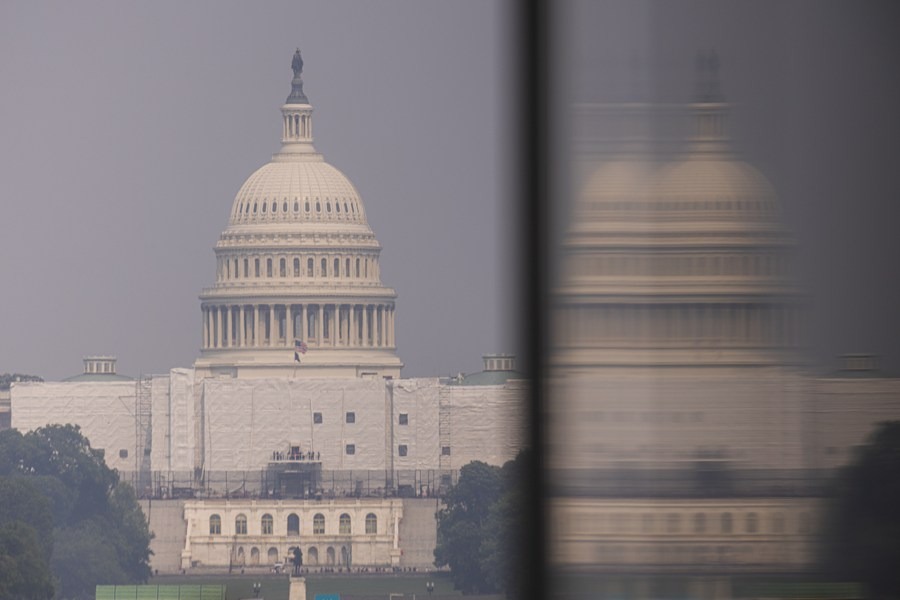Claim of slowing FDI reflects statistical bias


Of late, there has been a lot of talk about large-scale disinvestment by foreign companies in China. In the face of the complex international environment, it's crucial to objectively assess the situation and take necessary measures to attract foreign investment to China.
Data from the State Administration of Foreign Exchange show China's direct investment liabilities in its balance of payments stood at $33 billion last year, the lowest since records for quarterly outflow began in 1998. However, data from the Ministry of Commerce show that in 2023, the number of newly established foreign-invested enterprises nationwide increased by 39.7 percent year-on-year, with the actual use of foreign investment amounting to 1.14 trillion yuan ($158.65 billion), a historical high despite a decline of 8.0 percent year-on-year.
The two sets of data show significant differences. The Ministry of Commerce data on foreign direct investment (FDI) is more internationally comparable. The United Nations Conference on Trade and Development keeps the records of direct investment in different countries and publishes the World Investment Report every year which analyzes the annual global direct investment data and trends. The UNCTAD data on China's inbound direct investment comes from the Ministry of Commerce, so the UNCTAD figures would better reflect the overall changes and trends.
In fact, the decline in FDI inflows, which began in 2023, is a global phenomenon. In recent years, factors such as anti-globalization, protectionism, major countries' "reshoring" moves, geopolitical conflicts, the COVID-19 pandemic and the US Federal Reserve's interest rate hikes have accelerated the diversification, regionalization, "nearshoring" and "friend-shoring" of global industrial, supply and value chains, which has had a huge impact on global trade and international division of labor.
In particular, the "tide-of-the-US-dollar" effect caused by the Fed's interest rate hikes over the past two years has curbed the inflow of capital in emerging economies. The UNCTAD data show that the net FDI inflow in Mexico and India turned negative in the first three quarters of 2023, similar to the situation in China.
According to the latest data from the Organisation for Economic Co-operation and Development, in the first half of 2023, the global net FDI inflow fell by 30 percent year-on-year. Among developed economies, France, Germany, Japan and some other countries saw a decline of up to 60 percent year-on-year in the cumulative net FDI inflow in the first three quarters of 2023. According to OECD statistics, the net FDI inflow in the European Union fell by 86 percent in the first half of 2023 compared with the same period in 2022, while China saw an 80 percent year-on-year decline.
The decline in the use of foreign investment under the balance of payments framework should not be misinterpreted as foreign disinvestment, because of two reasons. First, the decrease in the profits of foreign industrial enterprises leads to reduced re-investment of profit. Second, the decline is related to the changes in the exchange rate differentials.
Over the past two years, the significant interest rate hikes by the Fed have led to a further inversion of the interest rate differential between China and the United States, a factor which must be taken into consideration before arriving at a relatively objective conclusion.
China's use of foreign capital in 2024 is likely to be more complex, and the task of stabilizing foreign investment remains arduous. But overall, the opportunities outweigh the challenges, and given the many favorable conditions, China is likely to attract and utilize more FDI in 2024.
China's sustained and stable recovery is the basis for attracting more FDI. Due to favorable factors such as optimization of macro-economic policies, sustained momentum in the manufacturing industry, and consumption recovery, several international organizations or institutions have forecast that China's GDP growth will be between 4.5-4.8 percent in 2024. However, China set a growth target of around 5 percent for its economy in 2024, which means it will continue to contribute handsomely to global economic growth. Plus, foreign-funded enterprises are confident about the prospects of the Chinese economy's high-quality development.
Besides, China is expected to issue a series of policy measures to further improve the business environment and promote high-level opening-up. At the end of last year, the State Council, China's Cabinet, issued the "Opinions on Further Optimizing the Business Environment to Increase Attractiveness to Foreign Investment". The document provides detailed guidelines and planning, including promotion of enterprise operations, and fiscal and tax support, and proposes to gradually ease market access for foreign investment, ensure foreign-invested enterprises participate in government procurement activities in accordance with the law, and establish and improve the system of roundtable conferences for foreign-invested enterprises.
Also, the pace of aligning Chinese laws and rules with global economic and trade laws and rules continues to accelerate. Last year, the State Council issued a document to facilitate institutional opening-up, which is aimed at aligning Chinese and international rules in areas such as competition policy, intellectual property rights protection, cross-border data transmission, and environmental standards, and will create a regulatory environment in line with global standards for global capital.
Judging from the above factors, the inflow of FDI into China, especially in its high-tech manufacturing sector, is expected to usher in a new round of higher-level growth in 2024, and China's absorption and utilization of foreign capital will enter a new stage of high-quality development.
The author is deputy director of the Institute of American and European Studies, China Center for International Economic Exchanges.The views don't necessarily reflect those of China Daily.
If you have a specific expertise, or would like to share your thought about our stories, then send us your writings at opinion@chinadaily.com.cn, and comment@chinadaily.com.cn.


































